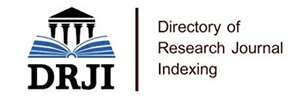
Journal Basic Info
- Impact Factor: 1.995**
- H-Index: 8
- ISSN: 2474-1647
- DOI: 10.25107/2474-1647
Major Scope
- Gynecological Surgery
- General Surgery
- Minimally Invasive Surgery
- Plastic Surgery
- Bariatric Surgery
- Thoracic Surgery
- Surgical Oncology
- Orthopaedic Surgery
Abstract
Citation: Clin Surg. 2019;4(1):2440.Research Article | Open Access
Vertebral Endplate, Posterior Ligamentous Complex and Neural Dysfunction: Key Factors for Posterior Fusion Strategy in Thoracolumbar Fractures
Mingyong Liu, Liang Zhang, Liangmin Zhang, Jianhua Zhao and Peng Liu
Department of Spine Surgery, Daping Hospital, Third Military Medical University, China
PDF Full Text DOI: 10.25107/2474-1647.2440
Abstract
The thoracolumbar region (T11 to L2) is more susceptible to injury than other parts of the spine, and posterior pedicle screw-based instrumentation and fusion is a widely accepted procedure to restore alignment and achieve instant and long term segmental stability of the injured spine through fusion, while the key factors determining the level of fusion remain unclear. To study the influence of vertebral endplate, Posterior Ligamentous Complex (PLC) and neural function on fusion strategy for thoracolumbar fractures via a posterior approach, a prospective study was committed. Here we report that neurological status and the integrity of the involved endplates and PLC are crucial for fusion strategy in thoracolumbar fractures. It is recommended that fusion segments are limited to the levels of the severely injured endplates and/or PLC and implantation is removed early at non fusion segments to preserve the mobility function.
Keywords
Cite the article
Liu M, Zhang L, Zhang L, Zhao J, Liu P. Vertebral Endplate, Posterior Ligamentous Complex and Neural Dysfunction: Key Factors for Posterior Fusion Strategy in Thoracolumbar Fractures. Clin Surg. 2019; 4: 2440.













